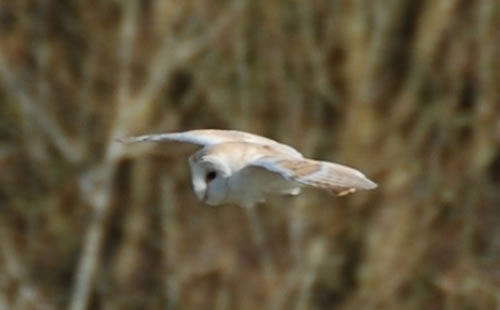Tyto alba

Habitat
Barn Owls prefer a mixed farming habitat with spinneys, ditches, rough pastures and well-managed field margins. Grassland makes good hunting ground, along with hay meadows. They are often found around farm buildings, barns and the edge of villages. A breeding pair of barn owls needs around 1.5 ha of rough grass..
Food
Short-tailed field voles are the preferred prey species, making up to 60% of their diet. Barn owls will also hunt for mice, shrews, small rats and birds..
Nesting
Barn Owls will breed from April to August, and a second brood may be reared when food sources are high. A breeding pair will use the same nest site year after year if undisturbed. The female lays four to seven white eggs in an unlined hole of a tree or barn. They will nest in good owl boxes that are a sufficient size, in a good habitat location and draught-free.
Song/Call
“Shreeee” - A shrill, hoarse shriek, often repeated. The begging call of young is more wheezy.
Beneficial Management
- Maintaining and creating field margins will provide good hunting areas. Areas of uncut grass for a year or more will hold good numbers of prey species.
- Unfertilized grass, buffer strips and rough grazing will also provide excellent hunting grounds.
- Retaining old, mature trees will provide prime nesting opportunities, also consider putting up nest boxes in prominent trees or farm buildings.
- Barn owls can be vulnerable to poisoning to rodenticides, therefore care must be taken when baiting.
Download and print
Download as PDF to print >
Get the Latest News & Advice
Join over 100,000 subscribers and stay updated on our latest advice, research, news and offers.
*You may change your mind any time. For more information, see our Privacy Policy.